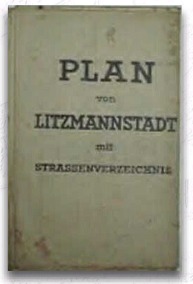Preserving
the Lodz Ghetto Archives
by Michael
J. Meshenberg
|
 |
In contrast to most of the Jewish communities throughout Europe, a remarkable
amount of documentation about the Lodz Ghetto has been preserved. There are,
to this day, hundreds of thousands of pages of documents about life in the
ghetto preserved in archives throughout the world.
Nachman Zonabend had been a resident of Lodz through
the ghetto years, serving the ghetto administration as a mailman. As such, he
was familiar with the entire district and its administrative offices. By
August 1944, the ghetto population that had numbered as high as 250,000 had
been reduced to just 877 people as a result of deportation by the Nazis and
deaths from disease and starvation. Zonabend was among those remaining and was
assigned responsibility to gather belongings of those who had been deported
for packing and shipping. At
great risk to himself, he slipped away from the work details on several
occasions and gathered collections of documents. Some were specific items,
such as a set of announcements of the Ghetto elder, Chaim Mordechai Rumkowski.
Others were unknown, including several suitcases previously stuffed with
documents that he found in the ghetto archives. All these items Zonabend
hid in various places in the ghetto, burying some in jars, others in a
dry well, which he covered with bedding strewn nearby hoping they would
be kept safe from prying eyes and the elements.
Zonabend was among
the very few survivors of the ghetto. After Lodz was liberated by the Red
Army in January 1945, he returned to his hiding places and retrieved his
treasures which, to his amazement, had not been ruined or discovered by
the looters roaming the streets. All this material he kept in his apartment,
working out a plan for their preservation with other survivors, until it
was safe to remove them in 1947. They were initially transported to Sweden,
where Zonabend settled, and eventually divided among YIVO and the other
repositories, where they remain as a unique record of the second largest,
and longest-lasting ghetto in Nazi occupied Europe.
The collection
is vast and contains correspondence and mimeographed announcements and
circulars, calendars, newspapers, statistical reports, charts, maps, reports,
essays, albums, photographs, and personal documents relating to the organization,
life, and destruction of the ghetto under Nazi rule, 1939-1944. Most are
in German, with many in Polish and Yiddish.
References: See Lodz
Bibliography section on the Holocaust period for references to the
Yad Vashem (Michal Unger) and YIVO (Marek Web) collections, Zonabend’s
own defense of his preservation efforts, and other related materials.
Michael J. Meshenberg
10 January 2000
Email: meshmich@aol.com
|